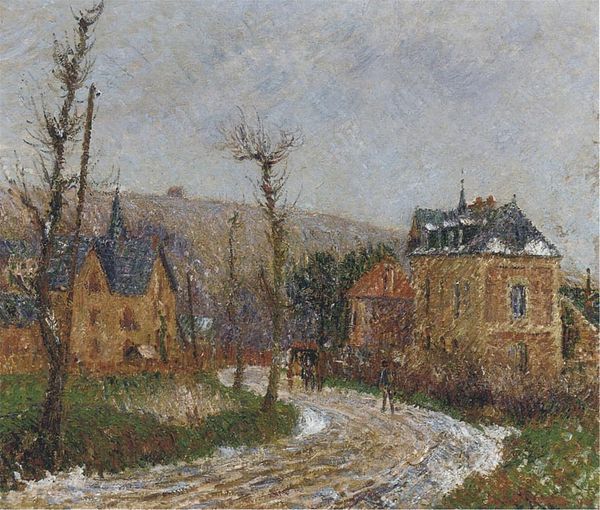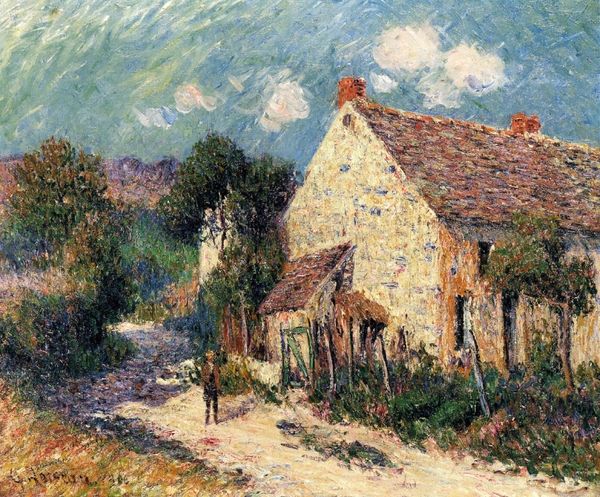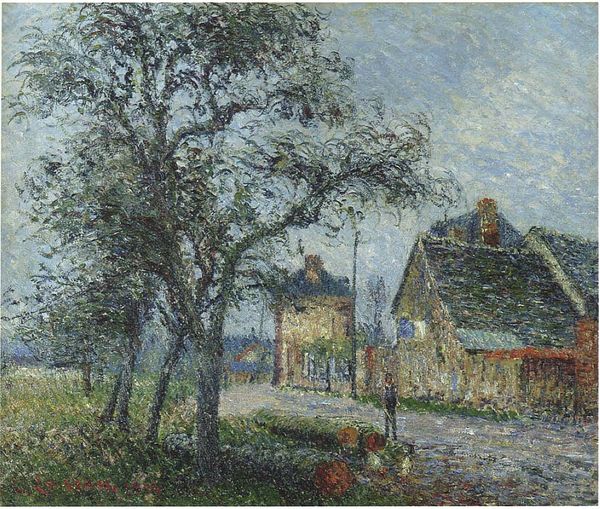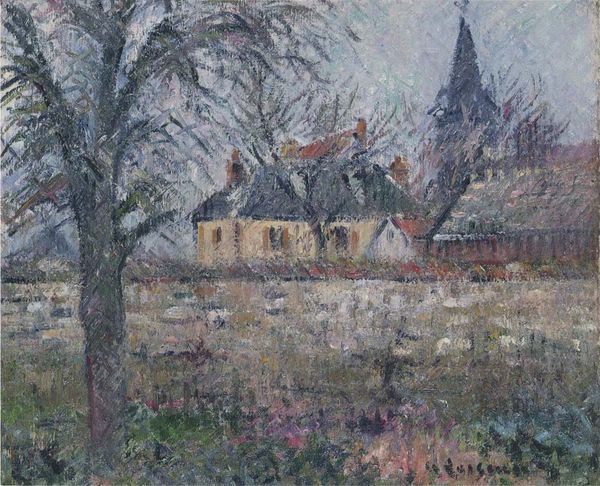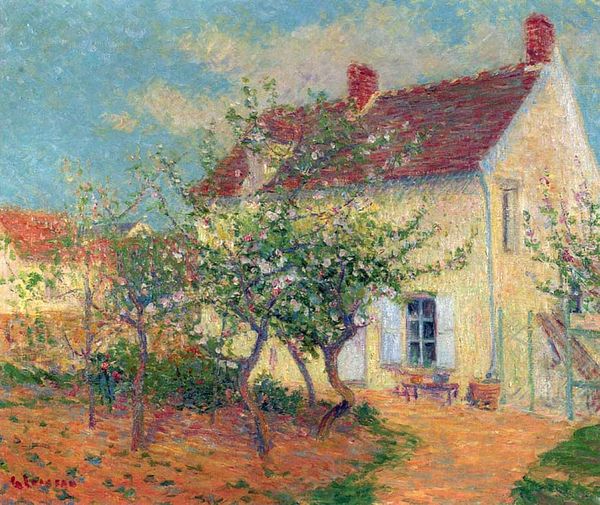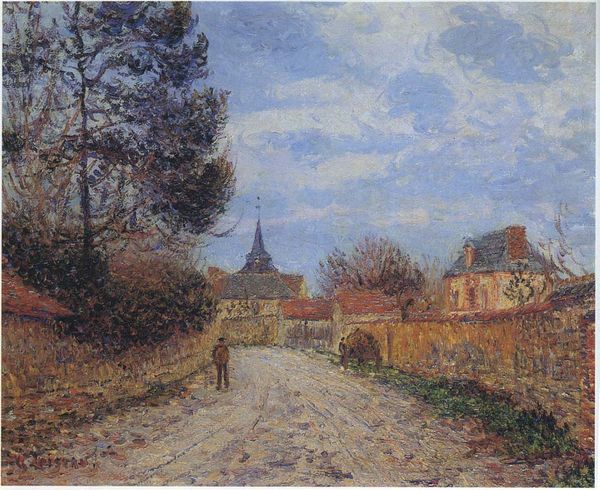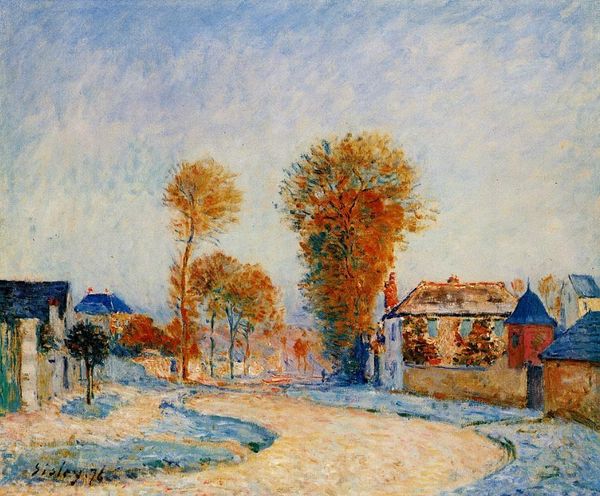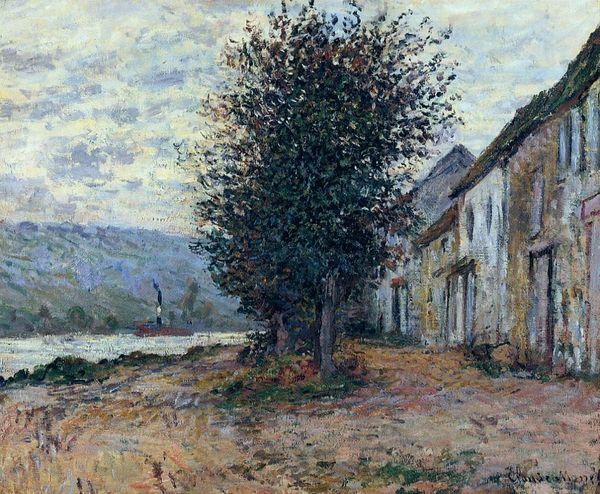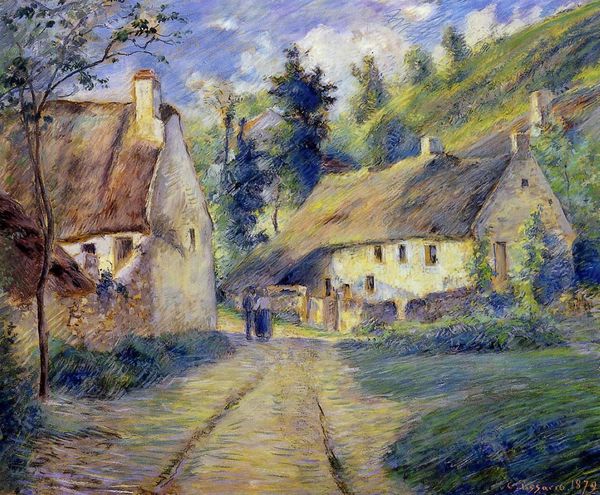
plein-air, oil-paint
#
impressionism
#
plein-air
#
landscape
#
oil-paint
#
landscape
#
oil painting
#
cityscape
Copyright: Public domain
Editor: Here we have Gustave Loiseau's "Houses near the Eure," an oil on canvas done in the Impressionist style. I'm immediately struck by how muted the colors are and how that creates this somewhat somber, almost melancholic, atmosphere. What are your thoughts on the cultural and historical significance of paintings like this? Curator: It’s interesting you pick up on the melancholy. This kind of domestic scene, captured *en plein air*, emerged during a time of great social upheaval in France. The rise of industrialization drastically altered the landscape and displaced many, leading to a sense of nostalgia for the traditional, rural ways of life. Do you see how the loose brushstrokes and somewhat indistinct forms contribute to this feeling? Editor: Yes, absolutely! It's like the scene is dissolving or fading away somehow. Curator: Exactly. Loiseau's work can be interpreted as a subtle form of social commentary. While not overtly political, it invites us to consider the changing relationship between humans and their environment, the impact of urbanization, and the yearning for a past that’s rapidly disappearing. Also, the presence of the figures could imply an intimate story that only the viewer can create. Do you think this sentiment is somehow still present in contemporary society? Editor: I think that sentiment of a 'lost past' still rings true. We romanticize previous decades despite their own societal issues. And personally, I definitely feel some connection to the figures here. Curator: Perhaps these paintings encourage us to interrogate our own relationship with the past. These landscapes prompt critical reflections on issues such as environmentalism, social justice, and the very idea of "progress". Editor: That's such a powerful point – it’s much more than just a pretty picture! Thank you for sharing your interpretation. Curator: And thank you for bringing your keen eye to this discussion! It’s through these dialogues that we can continue to unravel the rich and relevant layers of art history.
Comments
No comments
Be the first to comment and join the conversation on the ultimate creative platform.
